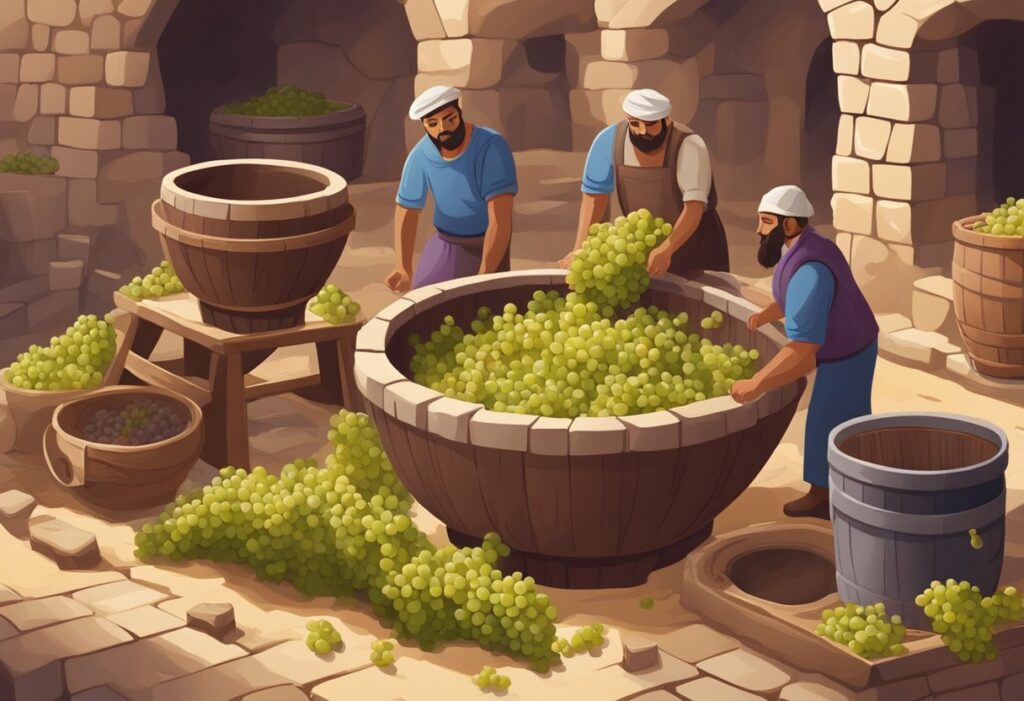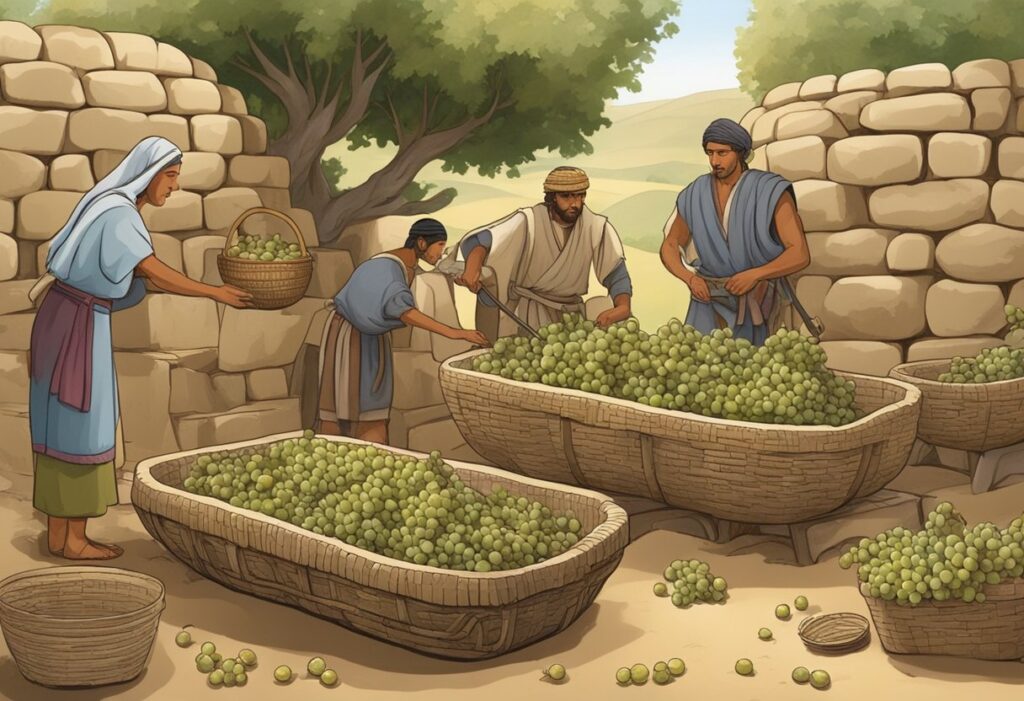Wine has played a crucial role in ancient civilizations, serving not only as a popular beverage but also as an important cultural symbol. The Egyptians, Greeks, and Romans were instrumental in shaping the techniques of winemaking. Each civilization brought unique innovations and methods that influenced the wine we enjoy today.
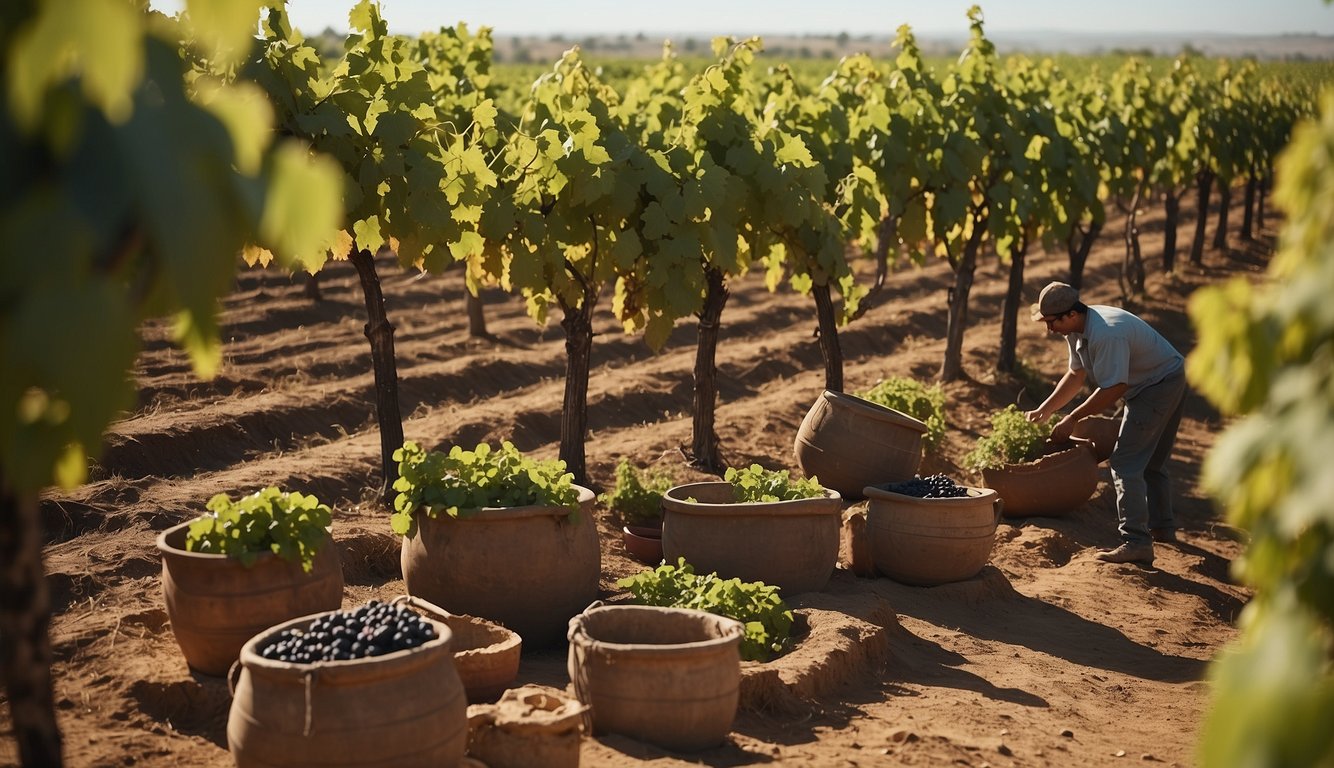
In Egypt, wine was often associated with religious rituals and the elite. They pioneered techniques like sun-drying grapes to increase sugar content, creating a sweeter wine. On the other hand, the Greeks institutionalized wine-drinking through their famous symposia, social gatherings where wine was mixed with water and enjoyed with conversation. This showcased the Greeks’ deep appreciation for wine as a social and cultural catalyst, as detailed by World History Encyclopedia.
The Romans took viticulture to new heights by refining grape cultivation and winemaking techniques. They developed large-scale wine production and distribution, making wine more accessible across the sprawling empire. Their practices laid the groundwork for modern viticulture and wine trade, spreading the influence of winemaking far beyond Italy. Each of these ancient cultures contributed significantly to the rich history and evolution of wine.
The Birth of Wine in the Neolithic Period
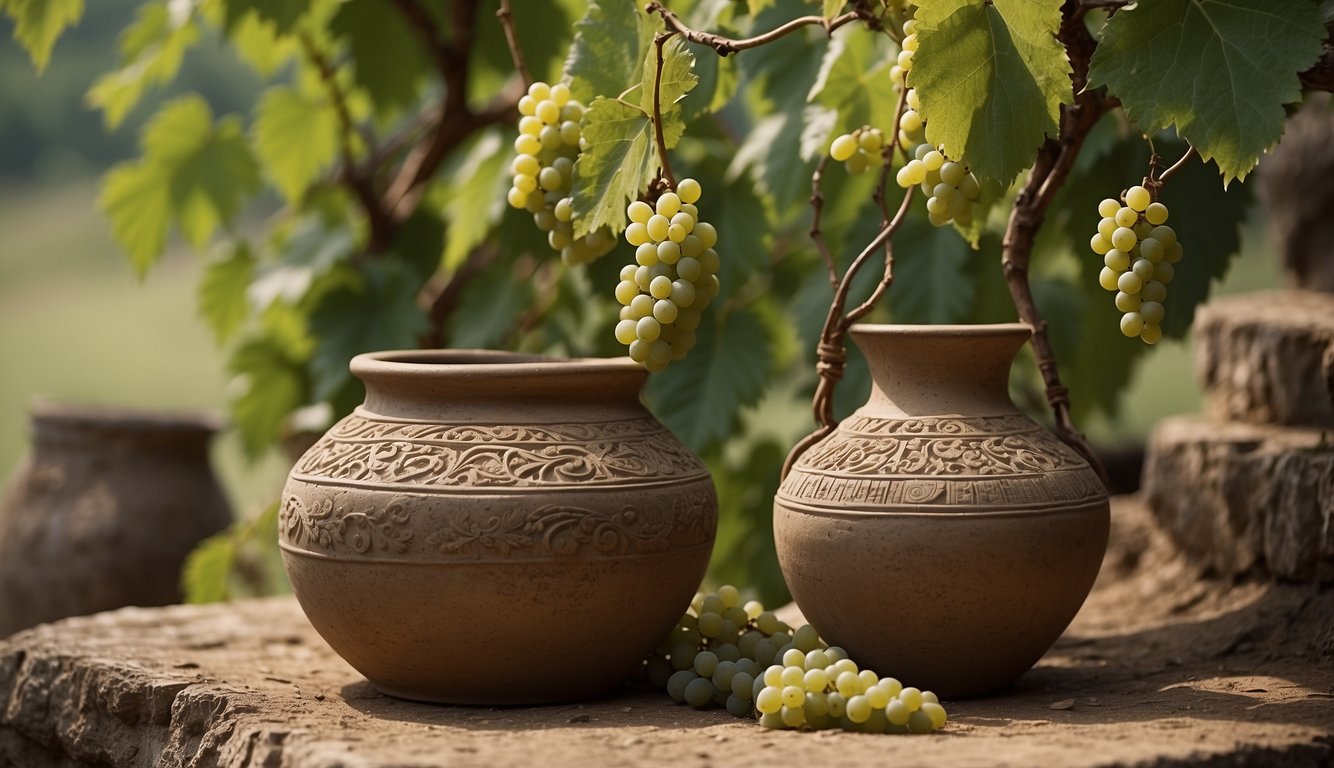
During the Neolithic period, the domestication of grapevines and the early techniques of winemaking began to take shape. This period marked a significant shift from natural grape fermentation to a more controlled process of producing wine.
Domestication of Vitis Vinifera
Vitis vinifera, the common grape vine, played a crucial role in early wine production. Initially, wild grapevines grew naturally in regions like the South Caucasus. Over time, early cultivators recognized the potential of these grapes. By selectively breeding the best vines, they could improve the quality and yield of the grapes.
Archaeologists have found evidence from around 6000 BC in Georgia, indicating that these early efforts were successful. This domestication process enabled more reliable and productive viticulture, providing a steady supply of grapes for winemaking.
Early Techniques of Winemaking
In the Neolithic period, winemaking was a rudimentary process. Early winemakers would crush grapes in clay vessels, such as large pots or jars. These vessels are among the earliest tools used for fermentation, where grape juice naturally turned into wine through the action of wild yeast.
These archaeological finds suggest that winemaking was not just about producing an alcoholic beverage. It became a part of cultural rituals and daily life. By using natural ingredients and simple techniques, early winemakers laid the foundation for modern viticulture, showing the ingenuity and resourcefulness of Neolithic societies.
Viticulture in Ancient Civilizations
Viticulture played a significant role in the agricultural practices and cultures of ancient civilizations. The Egyptians, Greeks, and Romans each contributed uniquely to the development of winemaking.
Wine in Ancient Egypt
In ancient Egypt, wine was initially associated with the elite and religious ceremonies. The Egyptians cultivated vineyards along the fertile Nile Delta, where the rich soil enabled the growth of grapevines. Pictographs from tombs and temples depict the entire process, illustrating how viticulture was interwoven with daily life and spirituality.
Egyptian winemaking involved pressing grapes in large vats, and fermentation took place in clay amphorae sealed with mud. Notably, the Egyptians were among the first to label wine jars, indicating the vineyard and quality. Wine was often reserved for the pharaohs and nobles, highlighting its status symbol. The Egyptians also used wine in religious rituals to honor the gods, reinforcing its cultural importance.
Grecian Wine Culture
Ancient Greece embraced wine as a fundamental part of their culture, impacting social, religious, and even economic activities. The Greeks perfected vine cultivation techniques, understanding the influence of geography on grape quality. Regions like Attica, Chios, and Crete became renowned for their exceptional wines.
Social gatherings, such as symposia, revolved around wine consumption, where discussions and entertainment flourished. Greek mythology also deeply intertwined with wine, celebrating Dionysus, the god of wine, who was believed to bestow the gift of viticulture upon humans. Temples and festivals often featured wine offerings to honor Dionysus.
The Greeks advanced wine storage by using terra cotta amphorae coated with resin, which helped preserve the wine and added unique flavors. The spread of Greek colonies facilitated the exchange of vineyard techniques across the Mediterranean, laying the groundwork for future civilizations.
The Roman Empire and Wine Expansion
The Romans took viticulture to unparalleled heights, expanding it throughout the vast Roman Empire. They innovated vineyard management by introducing trellising systems and improving pruning methods, which enhanced grape production. Romans categorized wines by region and quality, establishing the foundations of modern appellations.
Rome’s elite held lavish banquets where wine was central, and its consumption symbolized wealth and power. Wine was also used in various religious practices, reinforcing Rome’s sophisticated viticultural heritage.
The Romans constructed large winery complexes and improved storage techniques using wooden barrels, which allowed for aging and better transportation. Their expansion across Europe introduced viticulture to new regions, influencing local agriculture and spreading their winemaking knowledge.
For further insights, you can explore more about the beginnings of winemaking in Egypt and the geographical study of viticulture by ancient Greeks.
Spiritual and Social Significance of Wine
Wine has played an important role not only in daily life but also in spiritual and social contexts. From the devoted worship of wine deities to the communal joy found in celebrations, wine was deeply woven into the fabric of ancient cultures.
Dionysus and Bacchus: Wine Deities
In ancient Greece, Dionysus was the god of wine, pleasure, and festivity. People celebrated Dionysus through festivals known as Dionysia, where wine flowed freely. These events included theatrical performances, dances, and rituals aimed at honoring the god and seeking divine favor.
The Romans had their own version of Dionysus known as Bacchus. Bacchus was equally revered and associated with not only wine but also fertility. Bacchanalia, the festivals held in his honor, were known for their wild celebrations and were initially secretive.
Both deities symbolized the transformative power of wine, not just as a drink but as a medium connecting humans to something divine and extraordinary.
Symposiums to Festivals: Communal Enjoyment
In Greece, symposiums served as social gatherings where philosophical discussions and entertainment occurred over wine. These events emphasized measured drinking and intellectual conversation, showcasing the sophistication associated with Greek wine culture.
In Rome, public festivals and feasts often featured wine prominently. Events like Saturnalia and Bacchanalia were marked by communal enjoyment, where social norms could be relaxed, and people from various classes came together in celebration.
Wine also had a significant presence in ancient Egyptian society. It played a role in religious ceremonies and was often found in tombs as an offering for the afterlife. The Egyptians believed that wine could bridge the earthly and divine realms, making it a substance of great importance.
Wine served as a crucial element for fostering social bonds and spiritual connections across these ancient civilizations, enriching their cultural and religious practices.
Winemaking Techniques and Technology
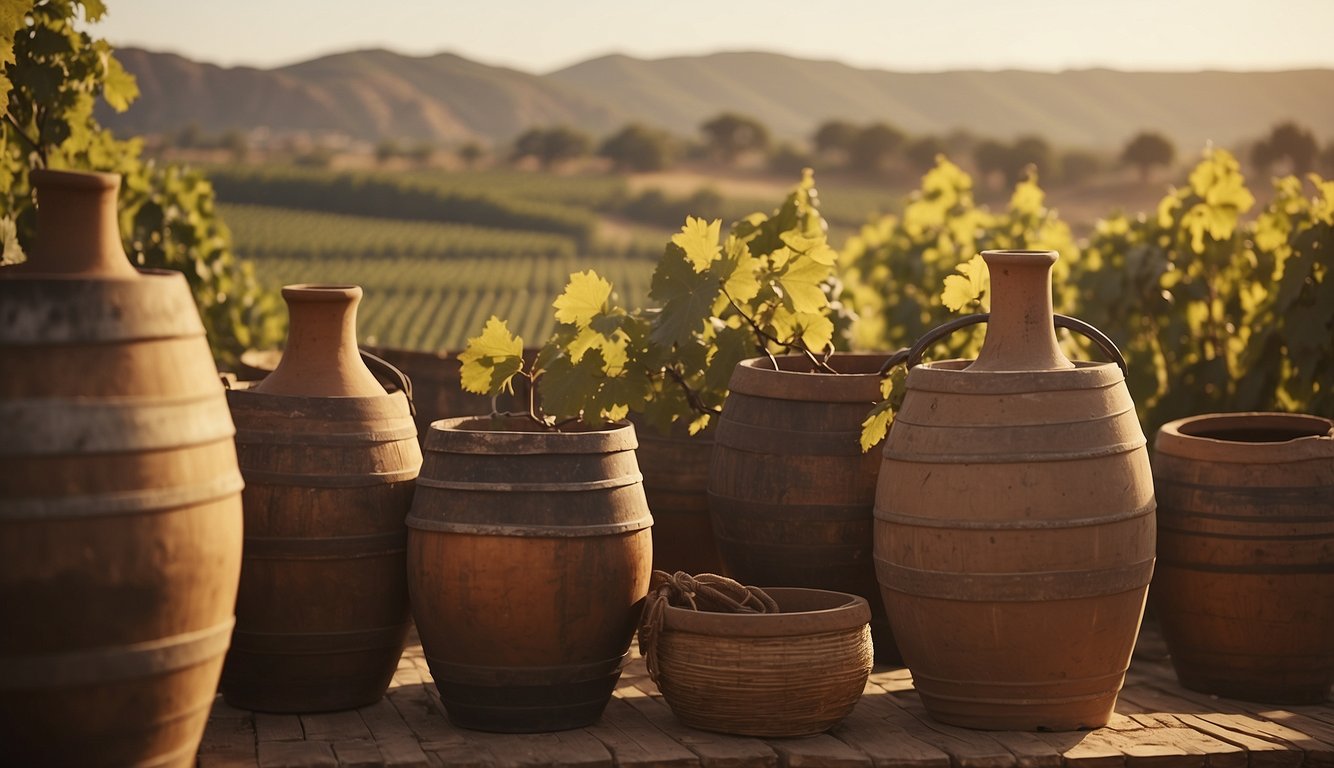
Ancient civilizations like the Egyptians, Greeks, and Romans used various methods and tools to improve the process of winemaking. Their practices laid the groundwork for modern viticulture.
Ancient Harvesting and Fermentation
Harvesting was one of the first steps in the winemaking process. Grapes were usually handpicked, often during festivals. After picking, they were brought to special areas for fermentation. The Egyptians used large ceramic jars to ferment the grape juice. These jars were often airtight, allowing the juice to ferment without contamination.
The Greeks introduced the use of wine presses, which made the process more efficient. This technology involved crushing grapes underfoot or using mechanically operated presses. This allowed for better extraction of juice.
The Romans improved on these methods by using more advanced pressing technologies and better control over fermentation. They often used large amphorae to store the fermenting grape juice. This allowed for larger batches and more consistent results.
Storage and Transportation Solutions
Once the fermentation process was complete, wine needed to be stored and transported. The Egyptians often used large pottery vessels to keep the wine. These vessels were sometimes buried in the ground to maintain a cool temperature.
The Greeks advanced storage techniques by developing amphoras, which were clay containers used to store and transport wine. These containers were sealed with pitch or resin to prevent leakage and preserve the wine’s quality.
The Romans further refined these techniques. They created specialized pottery and amphoras that could be easily transported across the Mediterranean. They also developed wooden barrels, which were more durable and easier to move. This helped in the widespread distribution of wine across the Roman Empire.
These historical advancements in winemaking, storage, and transportation have greatly influenced how wine is made and enjoyed today.
Trade, Laws, and Expansion of Wine Culture
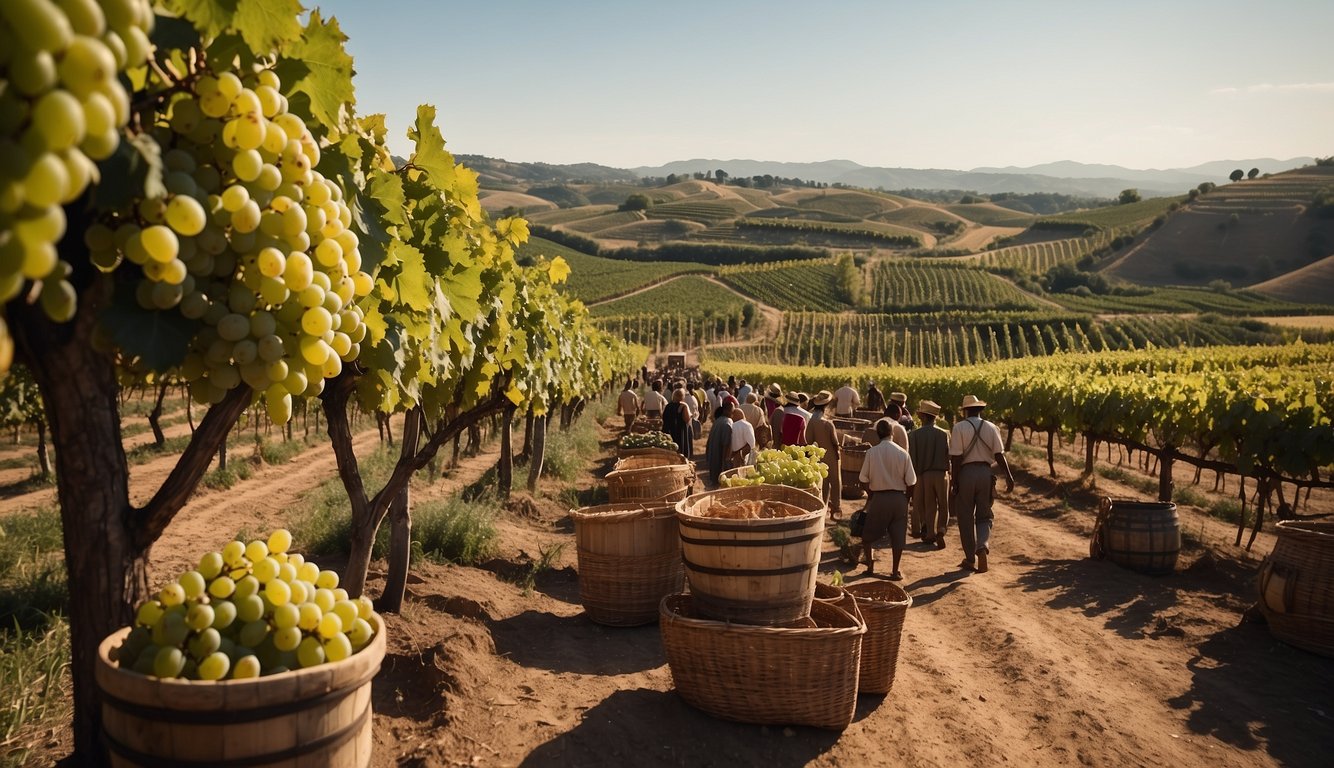
Wine played a significant role in ancient trade, spreading across various regions. Different civilizations formed laws around the production and distribution of wine, impacting how it expanded.
The Phoenicians and Maritime Wine Trade
The Phoenicians were key players in the wine trade. Known for their seafaring abilities, they transported wine across the Mediterranean. By linking the Levant and North Africa to places like Greece and Italy, they spread viticulture knowledge.
Phoenician ships carried amphoras filled with wine to the Near East and the Black Sea. These containers helped in preserving wine over long distances. They also opened markets for Mediterranean wines, promoting the exchange of winemaking techniques and grape varieties.
The trade routes established by the Phoenicians helped integrate wine into the daily life of different cultures. You can see their influence in the spread of wine-related artifacts and documents, suggesting their vital role in shaping ancient wine culture. The Phoenicians were not just traders but also cultural bridges.
Roman Influence on Wine Laws and Export
The Roman Empire had a profound impact on wine laws. Romans implemented regulations to ensure the quality and distribution of wine across their territories. Areas like France, Spain, and Portugal saw the spread of Roman viticulture techniques due to these laws.
Under Roman rule, winemaking regions were often given legal classifications. These classifications helped control the production standards. For instance, certain areas in Italy became famous for producing specific types of wine with consistent quality.
Romans also expanded wine trade by building roads and ports, facilitating the movement of wine across Europe. The Roman legal framework around wine ensured that the trade was not only widespread but also systematic and organized. This helped make Rome a central hub of the ancient wine business, integrating it deeply into everyday life and commerce.
The expansion of wine culture under Roman influence crafted the foundation for many modern European wine regions, making their impact long-lasting.
